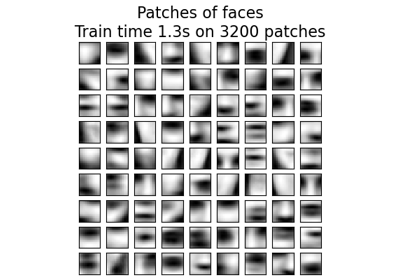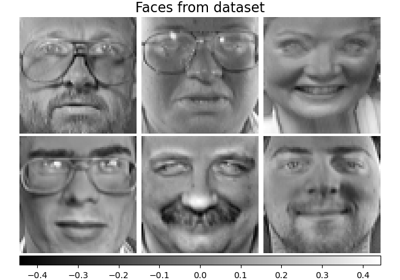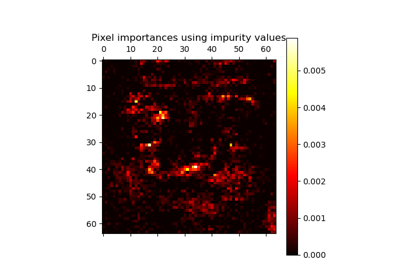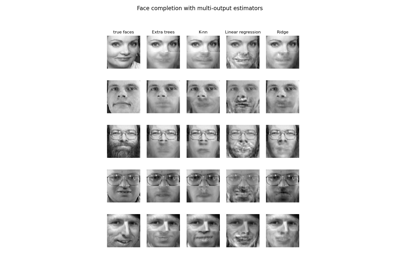sklearn.datasets.fetch_olivetti_faces¶
- sklearn.datasets.fetch_olivetti_faces(*, data_home=None, shuffle=False, random_state=0, download_if_missing=True, return_X_y=False)[source]¶
Load the Olivetti faces data-set from AT&T (classification).
Download it if necessary.
Classes
40
Samples total
400
Dimensionality
4096
Features
real, between 0 and 1
Read more in the User Guide.
- Parameters:
- data_homestr or path-like, default=None
Specify another download and cache folder for the datasets. By default all scikit-learn data is stored in ‘~/scikit_learn_data’ subfolders.
- shufflebool, default=False
If True the order of the dataset is shuffled to avoid having images of the same person grouped.
- random_stateint, RandomState instance or None, default=0
Determines random number generation for dataset shuffling. Pass an int for reproducible output across multiple function calls. See Glossary.
- download_if_missingbool, default=True
If False, raise an OSError if the data is not locally available instead of trying to download the data from the source site.
- return_X_ybool, default=False
If True, returns
(data, target)instead of aBunchobject. See below for more information about thedataandtargetobject.New in version 0.22.
- Returns:
- data
Bunch Dictionary-like object, with the following attributes.
- data: ndarray, shape (400, 4096)
Each row corresponds to a ravelled face image of original size 64 x 64 pixels.
- imagesndarray, shape (400, 64, 64)
Each row is a face image corresponding to one of the 40 subjects of the dataset.
- targetndarray, shape (400,)
Labels associated to each face image. Those labels are ranging from 0-39 and correspond to the Subject IDs.
- DESCRstr
Description of the modified Olivetti Faces Dataset.
- (data, target)tuple if
return_X_y=True Tuple with the
dataandtargetobjects described above.New in version 0.22.
- data



